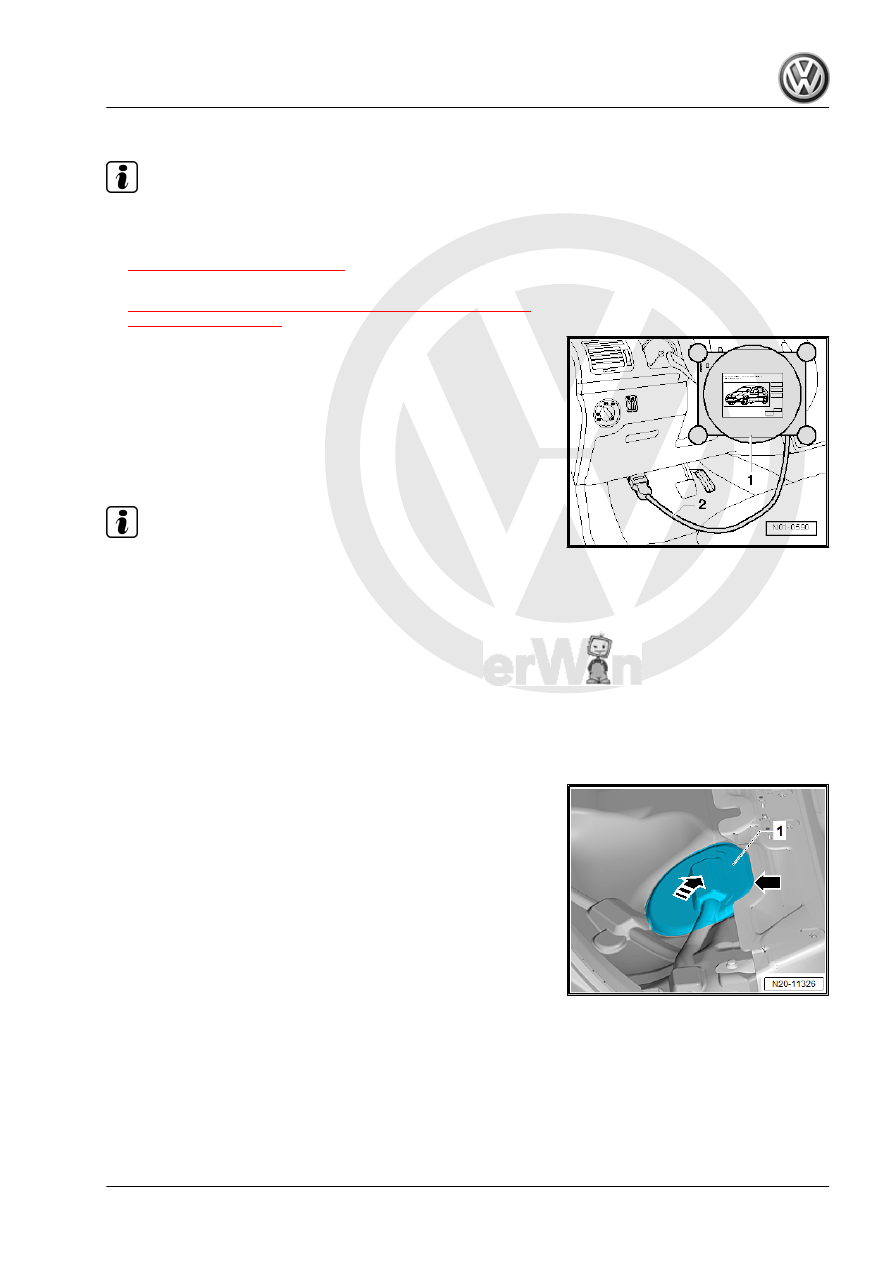Volkswagen Golf / Golf GTI / Golf Variant. Manual - part 755

Test Sequence:
Note
The output diagnostic test mode checks the fuel pump function.
– Pay attention to all safety precautions. Refer to
⇒ “1 Safety Precautions”, page 1
.
– Follow the guidelines for clean working conditions. Refer to
⇒ “3.1 Parking/Auxiliary Heater and Fuel System Clean Work‐
– Connect the Vehicle Diagnostic Tester -1- as follows:
– Connect the diagnostic cable connector -2- to the diagnostic
connection inside the driver footwell.
– Switch the ignition on.
– Select the fuel pump output diagnostic test mode in OBD.
The fuel pump must now accelerate slowly up to the maximum
RPM.
Note
♦
The fuel pump runs very quietly.
♦
If the output diagnostic test mode is performed several times
in succession, it may be necessary to briefly start the motor
before repeating the output diagnostic test mode.
– Switch off the ignition.
If the fuel pump does not start:
Golf Sportsvan:
– Remove the right rear seat. Refer to ⇒ Body Interior; Rep. Gr.
72 ; Rear Seats; Bench Seat / Single Seat, Removing and In‐
stalling .
– Partially loosen the cover -1- in the carpet at the separating
line -arrow-.
– Do not separate the cover completely from the carpet so that
later it will be installed correctly.
– Only loosen so far that the cover can be folded up.
– Fold up the cover in the direction of the -arrow-.
Golf and Golf Wagon:
– Remove the rear bench seat. Refer to ⇒ Body Interior; Rep.
Gr. 72 ; Rear Seats; Bench Seat / Single Seats, Removing
and Installing .